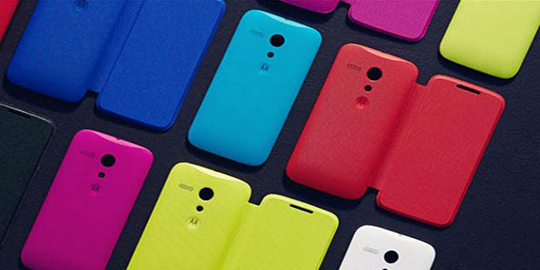
Technology Observatory from 10th to 17th of August
This week's Technology Observatory brings you the following stories:
● The Motorola Moto G2 might land on September 10th and cost about 250 euros
● Windows 9 will include Cortana, the smart Windows Phone assistant
● The new Motorola Shamu shows signs of life and positions itself as the possible Nexus 6
● Samsung Galaxy Alpha is already official
● KitKat grows and is already in 20% of Android devices
● Charging the mobile using sound may soon be a reality
● Microsoft (Nokia) invites us to IFA on September 4th, Lumia 830 or heir of the 1020 coming soon?
● Motorola announces a new event on September 4th: successors of Moto X, G, Moto 360 and more
● Google must reinforce its underwater cable to withstand shark attacks
Leaks on the successor of the balanced Moto G by Motorola as the protagonist have accumulated over recent days. As you recall, five days ago the possible specifications of this mobile were leaked, which for the time being is referred to by everyone as the Moto G2 or Moto G+1 though nothing is confirmed, through GFXBench, a cross-platform graphics benchmark database. There is no question that the Moto G is one of the most attractive, moderately priced cellphone available on the market to date, whereby many users expect its successor to set high standards. The good news is that, according to some media, like GSM Arena, the new mobile will be available next September 10th at a price of around 250 euros. Apparently, this information has been confirmed by a distributor who, in addition, has indicated that it is possible that Motorola will begin distributing the first devices at the end of August, though in principle they won't be available until the mentioned date of September 10th. What attracts our attention is that, if this information is confirmed, the Moto G2 will land on the market at a price that is clearly higher than that of the Moto G when it arrived to stores on December 1st of last year (179 euros), wherefore its quality/price ratio might not be as favorable as its predecessor. But, it's best for each of us to draw our own conclusions. If we grant credibility to the specifications that have been filtered to date, the Moto G2 will have a 5-inch screen with a resolution of 720p, an SoC Quad Core Snapdragon 400 by Qualcomm of 1.2 GHz, Adreno 305 graphics processing unit, 1 GB of RAM, 8 GB of internal storage, back camera of 8 megapixels, another front camera of 2 megapixels and Android 4.4.4 KitKat. We'll follow its trail and keep you updated.
When Satya Nadella speaks of his plans as the new CEO of Microsoft, he places a lot of emphasis on mobility as one of the most important factors on which the Redmond offices invest their research and development time. Products like Cortana have become a priority for Windows Phone, and it could now take the head-first plunge into the company's upcoming desktop operating system, Windows 9. The Windows Phone smart assistant could make a jump into the desktop and be integrated within Microsoft's future operating system. Using Windows 9, we could perform different tasks, like search for information or launch applications merely using voice thanks to Cortana, and Microsoft's idea seems to be, today more than ever, to unify its different operating systems under a single standard. Though the launch of this new Windows is planned for 2015, a preview version is awaited at the end of the year, and according to new rumors, platform managers are completely focused on including Cortana in the system, to be available in the final version. A smart assistant makes complete sense in an operating system like Windows 9, even more so if we consider its integration with Windows Phone; Microsoft's idea is to unify its products and make the experience as familiar as possible for users of its computers, tablets and smartphones. Nevertheless, Windows 9 will also come full of changes. Not only are people talking about the return of the Start menu, but also about the "death" of the vertical menu bar, and many more innovations that will try to somewhat push aside the system's touchscreen experience to gradually return to the traditional keyboard and mouse.
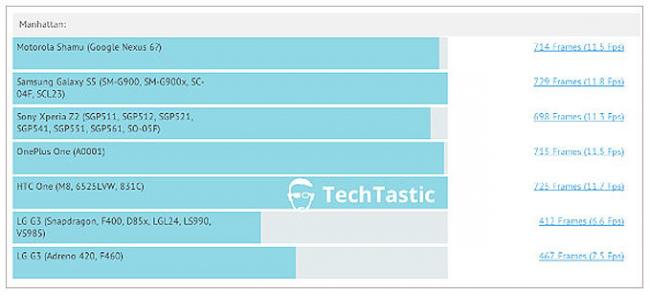
Over the last few days, performance tests designed for cellular phones have unexpectedly surprised us. Less than one week ago, the GFXBench data bench presented the possible specifications of the Moto G2 by Motorola, and this week has revealed something else we weren't counting on: the first performance rating of the Motorola Shamu, the cellular phone which, according to some sources, will be marketed by Google as the Nexus 6. It's a pity that, on this occasion, unlike what occurred a few days ago with the Moto G2, GFXBench did not provide a detailed description of its specifications. Anyway, it gives us a very important hint that allows us to sense, with enough precision, its SoC: its performance compared with other smartphones, like the Xperia Z2 by Sony, the Galaxy S5 by Samsung or the HTC One (M8). If we take a look at the performance graphics shown below this paragraph, you'll see that the Shamu practically matches the performance of the Galaxy S5, Xperia Z2, OnePlus One and HTC One (M8). But, what's really interesting is that all of these cellphone have a Snapdragon 801 SoC. The G3 by LG also uses this chip, but scores lower in this test because of the greater calculation required for managing the UHD resolution of its 5.5-inch screen. What's interesting is that, given these results, it’s quite reasonable to suppose that the Shamu will also be equipped with a Snapdragon 801 SoC and will offer a performance similar to that of the previously named phones. For now, there aren't any other clues as to its specifications, though over the last few days rumors say it might have a 5.9-inch screen and a finger scanner, like the ones built into Galaxy S5 and iPhone 5s. But, for now, we can only take this information with a grain of salt.
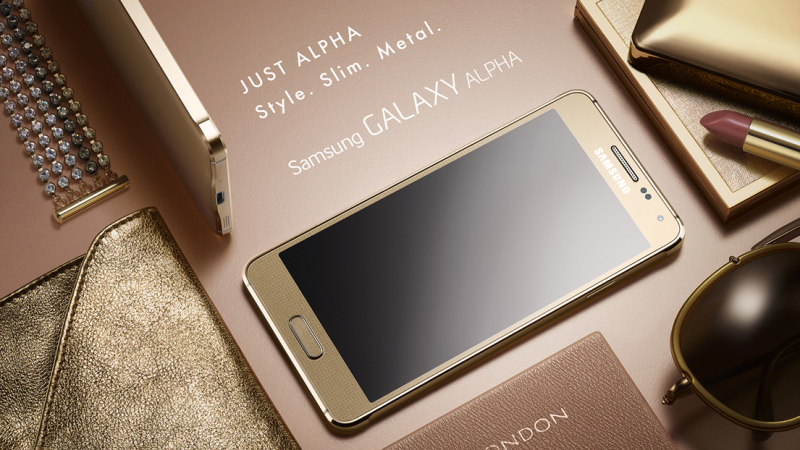
Faithful to their promise published in their official Twitter account, this week the South Koreans made the Samsung Galaxy Alpha official. This mobile has a metal frame and Super AMOLED 4.7-inch screen that promises to challenge the new Apple device expected the last quarter of the year. The phone has some intriguing specifications, such as its processor or sensors, which will position it for solid competition against its competitors, despite its presentation not scheduled within the official mobile device calendar. But, it has been a smart move, and it's expected to be available worldwide as of September 12th this year, in 5 different colors: black, white, gold, silver and blue; at a price just above 500 euros (USD689), it is strategically positioned to face the presentation of the iPhone 6.
● Samsung Exynos 5430 processor (Octa-Core, 1.8 GHz and 64 bits).
● RAM 2 GB
● SuperAMOLED HD, 4.7-inch and 320 ppp screen
● Internal storage 32 GB
● Rear camera 12 megapixels with LED flash
● Front camera 2.1 megapixels
● Connectivity 4G LTE-A, Wi-Fi a/b/g/n/ac, Bluetooth 4.0, GPS, GLONASS and USB 3.0
● Battery 1.860 mAh
● Fingerprint and heart rate sensors
● Software Android 4.4 KitKat + TouchWiz
As our colleague Nicolás Rivera at Celularis comments, Samsung has decided to bet on its own chipsets instead of using those manufactured by Qualcomm. In this case, the Exynos 5430, which is apparently faster than the Samsung Galaxy 5's Snapdragon 801. A priori, this may come as a surprise, but makes complete sense if we consider the recent termination of the supply contract for processors of a major North American brand. Therefore, the South Korean brand has no other option than to market these through its own devices.
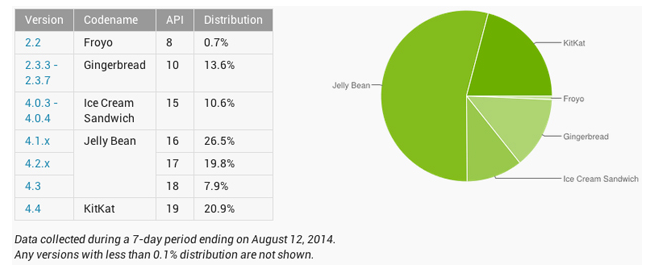
The chocolate seems to be melting in Mountain View, but Google has data that suggests otherwise. Despite its slow growth at the moment, KitKat already occupies 20.9% of the share of installed Android versions, a figure which has increased significantly from 17.9% last July, and even more so if we compare with the 14.9% of June. The reason doesn't require much explanation, since phones like the LG G3 and the Tab S by Samsung have helped users switch over to the new version, in addition to the fact that many somewhat older devices are also undergoing their corresponding upgrades. The cycle continues. Previous Android versions continue to drop, especially Ice Cream Sandwich, which nears 10%. KitKat will continue to grow, and soon another member will appear to regenerate the cycle, and we'll continue talking about how the latest Android version fights to gain market quota. What's clear is that readers of Engadget are up to date. No doubting that.
A group of researchers at Queen Mary University of London, in collaboration with Nokia, have developed a system based on nanogenerators that allows for charging cellular phones using ambient sound like music, traffic or our own voice. The research team used the properties of zinc oxide, a material that is capable of creating voltage by transforming kinetic energy into electric power when crushed or squeezed. These components, called nanorods, are able to respond to vibration and movement of the air generated by sound, and this type of mechanism could soon be integrated into our future smartphones. The inclusion of these "sound collectors" could be achieved, for example, using a spray with the chemical components required to cover a sheet of plastic with this zinc oxide. When that treated surface is heated to 90 degrees centigrade, the nanorods expand across its entire surface. The method was applied upon a sheet of this type with the size of a Nokia Lumia 925 and 5 volts were generated through the system, enough to start recharging a phone. One of the study's directors, Joe Briscoe, highlighted that this is "an exciting concept" that they hope to be able to transfer to a more feasible project.
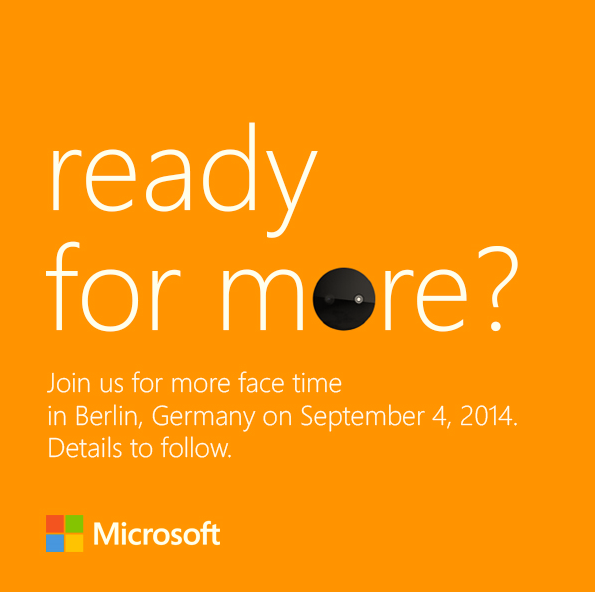
In less than a month the IFA Berlin Consumer Electronics Unlimited Show will be inaugurated, promising to be more than interesting. Microsoft will be present amongst the participants, and has already invited the press to appear on September 4th while the exhibition is underway. The press invite simply reads "Ready for more?”, but the most significant detail is that the last letter "o" has the shape of a curious lens that alludes to a possible substitute of the Lumia 1020 which made Nokia the leader of mobile/camera convergence. However, as one of our readers pointed out (thanks, mkd!) it’s more likely that Microsoft might have also wanted to shift the focus onto the launch of the Lumia 830, a device about which there has been a lot of talk for some time now, and which according to a few concept images will specifically integrate this type of sensor. The renewal of both products seems to happen right on time: innovations to sensors of the most modern, high-end devices have not been particularly astounding, and Microsoft might be taking advantage of this circumstance to present the promising renewal of the Lumia 1020 or a Lumia 830 which would specifically potentiate this aspect.

Motorola starts to send out press invites to an event scheduled for September 4th, and which is surely to be incredibly entertaining. What will they present? Obviously, the Moto 360, the watch with Android Wear that's generating more expectation than any other, but it won't be alone. One of the leading manufacturers, which has captivated its users in recent times with its products and support, will want its next generation of devices to set very high standards. The invitation has given some clues, dropping some clear hints of evidence onto the corners of the animated invitation to the presentation in Chicago. Here the Moto 360 will be revealed, the successor of the Moto X (by a phone with an X in the middle), heir to the Moto G (another smartphone with a G in the middle) and what appears to be a Bluetooth in-ear accessory.
Early this week we discovered FASTER, the 300 million dollar project for improving Internet traffic that counts with the participation of Google to connect the United States with two cities in Japan. Google isn't willing to be the least bit stingy in executing this project, and is already starting to protect its cables from shark attacks. The fact that sharks bite these types of cables is no surprise, given that they've always been attracted to the magnetic fields generated by the cables. The explanation behind this is the shark's biological ability of electroreception, allowing it to detect any electrical signal or impulse, no matter how small. In their natural habitat, sharks use this capacity to position themselves within a space and to perceive other fishes' weak electrical fields to feed on them. Underwater fiber optic cables must transport great amounts of energy to feed the underwater repeaters, wherefore these electric fields attract sharks. This is why Google will from now on reinforce all of its underwater cables with a fiber similar to Kevlar, a highly resistant material with which the cables will withstand shark attacks.
